A multiplexer works as a switch. It selects one of the available inputs I and based on the given address bits S sends the selected input's value on the output Z.
For example:
–––––––––––
| MUX | +-------++-----+-----++-----+
| | | index || a_1 | a_0 || f |
D_0 –––| I_0 | |---------------------------|
D_1 –––| I_1 Z |––– f | 0 || 0 | 0 || D_0 |
D_2 –––| I_2 | | 1 || 0 | 1 || D_1 |
D_3 –––| I_3 | | 2 || 1 | 0 || D_2 |
| | | 3 || 1 | 1 || D_3 |
| S | +-------++-----+-----++-----+
–––––––––––
| |
a_1 a_0
In the example the output function is defined:
f = ¬a_1⋅¬a_0⋅D_0 + ¬a_1⋅a_0⋅D_1 + a_1⋅¬a_0⋅D_2 + a_1⋅a_0⋅D_3
In your case, the output is described by the given function of four variables and the multiplexer is supposed to be an 8:1, so there will be three variables used as the address bits (a, b and c) and the fourth (d) as the partitioned off input signal – parameter of the function f(d) representing the output value.
f(a,b,c,d)=¬a⋅¬b⋅¬c⋅d + ¬a⋅¬b⋅c⋅d + ¬a⋅b⋅¬c⋅d + ¬a⋅b⋅c⋅¬d + a⋅¬b⋅¬c⋅¬d + a⋅b⋅¬c⋅d
index || a | b | c | d || f(a,b,c,d) | f(d)
---------------------------------------------
0 || 0 | 0 | 0 | 0 || 0 | d
1 || 0 | 0 | 0 | 1 || 1 | d
2 || 0 | 0 | 1 | 0 || 0 | d
3 || 0 | 0 | 1 | 1 || 1 | d
---------------------------------------------
4 || 0 | 1 | 0 | 0 || 0 | d
5 || 0 | 1 | 0 | 1 || 1 | d
6 || 0 | 1 | 1 | 0 || 1 | ¬d
7 || 0 | 1 | 1 | 1 || 0 | ¬d
---------------------------------------------
8 || 1 | 0 | 0 | 0 || 1 | ¬d
9 || 1 | 0 | 0 | 1 || 0 | ¬d
10 || 1 | 0 | 1 | 0 || 0 | 0
11 || 1 | 0 | 1 | 1 || 0 | 0
---------------------------------------------
12 || 1 | 1 | 0 | 0 || 0 | d
13 || 1 | 1 | 0 | 1 || 1 | d
14 || 1 | 1 | 1 | 0 || 0 | 0
15 || 1 | 1 | 1 | 1 || 0 | 0
The truth table has been reduced to 8 lines by partitioning the input signal d off. Now the number of rows matches the number of multiplexer's inputs.
index || a | b | c || f(d)
-----------------------------
0 || 0 | 0 | 0 || d
1 || 0 | 0 | 1 || d
2 || 0 | 1 | 0 || d
3 || 0 | 1 | 1 || ¬d
-----------------------------
4 || 1 | 0 | 0 || ¬d
5 || 1 | 0 | 1 || 0
6 || 1 | 1 | 0 || d
7 || 1 | 1 | 1 || 0
In the following picture is a graphical representation of the multiplex.


